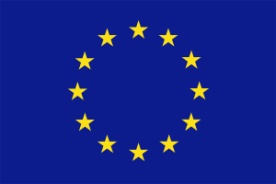Orbital images provide the geological and geomorphological context of rover and lander views. Only the NASA (National Aeronautics and Space Administration) HiRISE (High Resolution Image Science Experiment) instrument provides imagery at a comparable resolution to rover PanCam (Panoramic Camera) (this at a range of 20 metres). Remote sensing systems from the early vidicons of the fly-by Mariner-9 (1972) and orbiting Viking Orbiter (1976-86) through Mars Global Surveyor (1996-2009) through to the current systems (Mars Odessey:1999-present; ESA (European Space Agency) Mars Express: 2003-present; NASA MRO (Mars Reconnaissance Orbiter): 2006-present) have captured much if not all of the Martian surface at resolutions down to 250 mm. In areas with dust deposition or gully-forming or impact cratering, this historical time series of images allows to explore the Martian surface over the last 38 years [1].
For highly precise localization, mapping, navigation and many scientific objectives, systematic analysis and integration of the topographic capabilities of orbital, descent and ground images with an integrated geometric model is essential. Based on an integrated geometric model, the best possible accuracy can be achieved which can significantly aid post-mission topographic and geological analysis [102]. In particular, the integration of orbital and ground images play a significant role in the localization of NASA’s twin Mars Exploration Rovers where orthophotos derived from ground imagery are compared with the orbital imagery to refine the initial estimate of the 2D rover position [34]. Moreover, by using a rigorous geometric model for orbital image processing which has been developed at OSU (Ohio State University), orbital imagery [2] can be used for DTM (Digital Terrain Model) and orthophoto generation [35], [130], [131]. These products can be later utilized to help locate the rover with terrain matching and rock pattern matching procedures or they can be used to help mission scientists to find the safest rover path for long term planning [130]. In addition to orbital imagery, MER scientists have also benefited from landing site topographic mapping and lander localization capabilities of the MER descent imagery.
The three descent images for each MER site are extremely important at the beginning stage of the mission because the images help to bridge the large scale gaps between the orbital images (>>250 mm) and rover images (a few mm resolution). These orbital images are used as background images for the planning of rover activities and, science target selection etc. because the rover moves outside of the descent image coverage. They were used to correct the landing trajectory, and they can be used for BA (Bundle Adjustment) as well. They and newly, in the PRoViDE (Planetary Robotics Vision Data Exploitation) environment generated 3D vision processing results, are embedded in the spatial context of both MERs’ (Mars Exploration Rovers) rover operations site.
As a Participating Scientist of the NASA (National Aeronautics and Space Administration) Lunar Reconnaissance Orbiter mission, Dr. Ron Li is leading the OSU (Ohio State University) team in developing a rigorous photogrammetric model for integrating LROC NAC (Lunar Reconnaissance Orbiter Camera Narrow Angle Camera) imagery with laser altimetry data to map the lunar terrain. To improve and adapt their Mars-based OrbiterMapper software for use in lunar exploration, recently OSU have made improvements that include two rounds of grid matching for more reliable matching, three-fold matching along seam lines in order to decrease seam inconsistency in the DEM (Digital Elevation Model) areas of overlap, and research into boresight calibration and jitter analysis. The performance of Orbiter Mapper has been evaluated through a DTM (Digital Terrain Model) comparison using data covering the Apollo 15 landing site and Tsiolkovskiy Crater. OrbiterMapper has been applied successfully to the generation of 3D lunar terrain maps to support different scientific objectives. To date, OSU has generated topographic products for more than ten sites including Compton, Compton-Belkovich, and King craters. OSU’s products have been used by LRO (Lunar Reconnaissance Orbiter) science team members to study the formation of lunar features such as craters and lunar lobate scarps and to analyze the topographic characteristics of targets of interest.
The Viking Landers as well as the Pathfinder Lander [8] were identified in high resolution orbiter images obtained by HRSC (High Resolution Stereo Camera) on Mars Express and by HiRISE (High resolution Image Science Experiment) on MRO (Mars Reconnaissance Orbiter). However, lander images (such as those from Pathfinder [13]) and orbital images have not yet been visualised together providing the overall context for the lander imagery. This is also true for the Huygens mission for which a large number of descent images [2] and the lander images are available [3]. Even from non-academia, remarkable results were achieved from Huygens descent imagery [94].
For the Lunar case, LRO (Lunar Reconnaissance Orbiter) has recently provided excellent image data that allows analysing the position, orientation and conditions of both Lunokhods (Figure 12), well usable to insert the last taken Lunokhod ground images into the Lunar coordinate system.

Figure 12: Left: Lunokhod 1 visible in LRO (Lunar Reconnaissance Orbiter) images. The rover has a closed lid and appears to be oriented northward. Middle: Lunochod 2, which has an open lid and is orientated SE. The orientation has been confirmed by Sasha Basilevsky. Right: a picture of a Lunokhod rover illustrating it’s approximately circular plan view (Source: ASU (Arizona State University) / MII (Extraterrastrial Laboratory research (MexicanLab)) / TUB (Technical University Berlin))The technique developed by the MOC (Mars Observation Camera) and MGS (Mars Global Surveyor) operations teams, known as cPROTO (compensated Pitch and Roll Targeted Observation) , allows the camera to obtain images that have better than 1 meter per pixel resolution. Typically, the images have about 1.5 meters per pixel resolution in the cross-track (east-west) direction, and about half a meter per pixel in the down-track (north-south) direction. These pictures also have an improved signal-to-noise ratio when compared to “normal” 1.5 m/pixel images, thus improving on the overall quality of a typical MOC full-resolution image. MOC cPROTO images allow objects of as small as 1.5 meters (5 feet) to be seen, including the Mars Exploration Rovers and the tracks they make on the surface.
[1]ODE (Orbital Data Explorer) [80] can be used to fulfil a quick survey on available orbiter data for the respective scenes.
[2]At this point it is impossible to mention all available candidate orbiter sensors. To name a few, Orbiter DEMs (Digital Elevation Models), ortho images and scattering properties are derived from HiRISE (High Resolution Image Science Experiment), HRSC (High Resolution Stereo Camera), OMEGA and CRISM (Compact Reconnaissance Imaging Spectrometer for Mars). UCL-MSSL (University College London – Mullard Space Science Laboratory) have created DTMs (Digital terrain Models) and ortho images from HRSC (High Resolution Stereo Camera), CTX (Context Camera) and HiRISE (High Resolution Image Science Experiment) of all the martian landing sites, the rover traverses and the planned MSL (Mars Science Laboratory) landing site in Gale crater.


